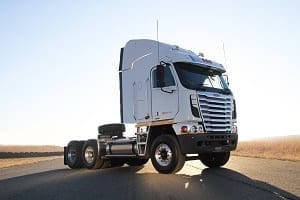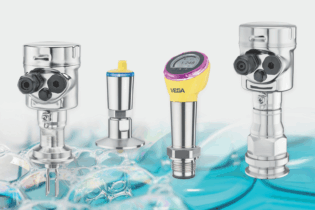Truck manufacturers need to ensure they develop and supply vehicles that are suited to the conditions in which they’ll be operating. Tristan Wiggill ponders if they’re getting it right.
In order for transporters to be competitive on national routes, like the N1 between Cape Town and Johannesburg, they need to ensure that they optimise their efficiencies. “By offering state-of-the-art European products, we can ensure that these efficiencies and requirements are met and, thus, reduce overall operating costs,” says Mark Gavin, national sales director at DAF Trucks. “Most importantly, we address the need for heavy-duty cooling. The demands of the South African climate, environment and topography are extremely different to those in Europe. We ensure that heavy-duty cooling systems are fitted to all vehicles sold in the Southern African market, which not only improves performance of the vehicle, but increases longevity as well. “This, along with a number of other technical modifications, ensures that DAF long-haul vehicles are well suited for African conditions. Furthermore, these kinds of long routes are physically taxing on a driver. We ensure that the cab is more than just a cab, that it’s also a workstation for the driver, as well as being as comfortable and spacious as possible. In addition to this we offer 40 000 km service intervals which are perfectly suited to such long-distance applications,” he adds. Life’s a gas With respect to vehicle emissions and fuel quality, Euro 4 and Euro 5 engines need 50 parts per million (50ppm) Sulphur or less in the diesel. There are a number of areas in South Africa where 50ppm diesel is readily available, and the country’s closest neighbours Swaziland, Botswana, Namibia, Lesotho and Zimbabwe all import their fuel from South Africa. Still, fuel quality in Africa remains a challenge, with high Sulphur content in diesel the biggest concern; it is a toxic element which damages engine components. North of the Limpopo, the Sulphur content can vary greatly, from 500ppm to 5000ppm. Cross-border operators must, therefore, perform adequate route planning and avoid ad hoc fill ups. Driver education is important in this regard. “We believe that we have the right technology in the company. As long as some level of 50ppm diesel fuel is available, we will bring in our technology,” says Dr Wolfgang Bernhard, member of the Board of Management of Daimler AG responsible for Daimler Trucks & Buses. Lots of people said: ‘How is Fleetboard (Mercedes-Benz telematics), tracking and driver diagnosis going to work in Africa’? We believe it is the most important factor for us in selling new trucks,” adds Kobus van Zyl, Executive Director: Daimler Trucks & Buses Southern Africa. “With our driver skills shortage and lack of training, it is important that we embrace technology. Africa is fast becoming one of the most connected continents. I ask Europe to send the technology because we are ready to embrace technology with our customers.” There is the counter argument that certain technology is simply too complicated and that nobody can handle it. Dr Bernhard disagrees. “Consider the move from manual transmission to automatic transmission, where you take driver error out of the equation and ensure that the machine, the engine, the truck always shifts at the best possible time to save fuel and conserve the long-term reliability of the powertrain. That’s very important. You might say this is too sophisticated. We have automatic transmissions running around the world, doing their job and making the powertrain more fuel-efficient and safer.” “I was astonished in central Africa after meeting customers who said they would like to have a device on their trucks to pinpoint exactly where the vehicles are. They want to know where their trucks are. We are not talking about the USA, we’re talking about Tanzania. They want to be able to switch the engine off remotely, in case it is stolen. We can do that. We have that in Brazil. They would also like to see how the driver is doing, what’s the driving record and review the safety records. They want to review hard braking, going too fast in the turns and how fuel conscious the driver is being.“There is also a playful element for drivers that engage in championships to see who the best driver is. All of this can be orchestrated. All these things can be done with Fleetboard. I think this type of technology can play a big role in Africa. We have it and we are rolling it out and there is more to come. We should not be shy of technology, we should not underestimate our customers in their abilities to adopt and learn and absorb this new stuff because this is what this region needs.”
Head of product management at MAN Truck and Bus SA, Livingstone Mulaudzi, says the vehicles the company imports and/or assembles are designed to operate in high ambient temperatures (+35C). “These vehicles are not tested locally. We receive a lot of feedback from local operators and we use this data constructively to mitigate the high temperatures. Even the intarders on the transmission are equipped to deal with what are termed “hot countries”. The parts side of the business is demand driven and because parts are specified correctly in the design phase, there aren’t higher failure rates on cooling parts,” he clarifies. In the front line Globally, oil companies and lubricant suppliers are extremely familiar with all truck OEM’s. They are in fact, strategic partners. The likes of Volvo Trucks and Mercedes-Benz, among many other truck brands and lubricant suppliers like Castrol and Shell all work together alongside a number of Hydrocarbon suppliers. This collaborative work is done in advance, at the vehicle conceptualisation stage. Lubricant and oil suppliers are therefore very much in the front line and know exactly what the engine and driveline are going to look like before rubber meets the road. Truck OEM’s tell oil and lubricant suppliers what exactly is required from them and then it is up to those suppliers to formulate a suitable product/s. In the case of Castrol, formulation takes place in four stages, including testing at an independent testing centre in the UK, as well as at vehicle OEM facilities, independent testing laboratories and lastly, at the facilities of independent companies not involved in the automotive oils and lubricants industry. This testing process can take years to finalise. A single oil or lubricant product may face a suite of 22 tests and, should it fail a single test, has to be developed again from scratch. Once all testing has been done, the product will either meet a certain spec or will be approved to perform a certain function. It will then be ratified by vehicle OEM’s. Oil and lubricant suppliers also know where the vehicles they are developing products for are to be sold/supplied to. These companies need to know what fuel quality they use. Castrol, for example, supplies products to 42 countries in Africa. Suppliers frequently consult with transport operators and gather information on routes travelled and loads carried. Oils and lubricants suppliers perform condition monitoring tasks to analyse and advise operators as to how they can improve their uptime. It’s the OEM’S that dictate service intervals, which are developed according to the fuel and lubrication qualities in the region. Transporters should pay particular attention to: • Route planning• Condition monitoring
• Defining a maintenance regime
• Reducing the amount of idle time
• The condition of fuel and oil filters, interpreting what they’re communicating








